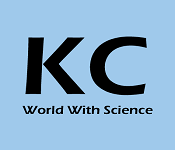Theme: Scientific approaches to prevent infectious and contagious diseases
EURO INFECTIOUS CONGRESS
World Congress on Infectious and Contagious Disease invites all the participants across the globe to attend and share their insights and convey recent development technologies and methodologies in the field of infectious and Contagious diseases based on the theme “Scientific approaches to prevent infectious and contagious diseases” which will be held during November 17-18, 2022 Berlin,Germany. We are pleased to welcome all Virologists, Scientists, Delegates, Speakers, dermatologists, pulmonologist, and primary health care doctors of infectious and contagious diseases to attend the conference.
EURO INFECTIOUS CONGRESS aim is to bring together popular academicians, research scholars and researchers to share their experiences and this will results on all aspects of the conference . It also provides a best platform for researchers, participants, and educators to attend and discuss the most recent innovations.
Scope and Importance:
Euro infectious congress 2022 aims to discover advances in infectious and Contagious and study about the early detection as well as treatment care based on Professional standards, and intense research to complete cure for different infections. The Conference is to give a platform to academicians and practitioners from multiple disciplines to debate and deliberate on social change that is covered by innovation and technology.
Who can attend?
EURO INFECTIOUS CONGRESS 2022 brings together individuals who have an interest in different fields of Immunologists, Biotechnologists, Health-care professionals, infectious and Contagious Faculties & associations. It is a forum to discover issues of shared concern as well as exchange knowledge, share evidence and thoughtsTarget Audience:
- Researchers and Students
- Virologists
- Academicians
- Immunologists
- Practitioners
- dermatologists
- Pharmaceutical Experts
- Pulmonologists
- primary health care doctors
The conference agenda includes:
- Keynote Forum
- Workshops
- Plenary Talks
- Young Researcher Forum
- Poster Presentation
Track 1. Scope of Infectious Diseases:
Infections should be developed as strength within the late century after significant developments had been made within the field of anti-microbial medicines to treat life-threatening, postoperative, and trauma-related infections, infectious infection advanced as strength within the late twentieth century. The industrialized world benefited from the development of chemotherapeutic operators, the extension of open wellbeing hones, and profound revelations within the fields of microbiology and immunology, all of which resulted in a significant decrease within the frequency of mortality and morbidity due to infectious forms, particularly in the a long time following WWII.
Bacterial Infections:
Parasitic Infections:
Track 2. Epidemiology & Transmission:
The study of disease transmission involves considering the determinants, events, and spread of wellbeing and infection in a defined population. Contamination is characterized as the replication of organisms in human tissue, which can result in sickness. A carrier may be a person who give shelter irresistible live beings but has no self-evident affliction. The transmission methodology is the means by which the operator travels from the source to the destination. Contact, common vehicle, discussion, and vector transfer are the foremost common strategies of transmission. The specialist is spread specifically, by means of suggestion, or by airborne beads in touch transmission. When life forms are transported particularly from one source to another, usually known as coordinated contact transmission.
Airborne transmission: To avoid contamination spread by minute particles. To be genuinely airborne, the particles ought to travel more than 3 feet through the discuss from the source to the have. Bead cores are the buildup from the vanishing of liquid from beads, are light sufficient to be transmitted more than 3 feet from the source, and may stay airborne for delayed periods.
Vector borne transmission: in which arthropods are the vectors. Vector transmission may be outside or inside. Outside, or mechanical, transmission happens when living beings are carried mechanically on the vector (for illustration, Salmonella life forms that sully the legs of flies).
Track 3.Diseases caused by virus:
Many infections cause no harm or disease at all. However, some infections may attack certain cells and multiply inside them. Once mature the daughter viruses break the cell and spread somewhere else. This is called a lytic infection. Eventually, in case have immunity works effectively; the virus-infected cell may be killed by the have, driving to intrusion of the infection cycle and remedy of the infection. However, usually not true for all viral infections. The viruses may endure within the cell without damaging it and make the cell a carrier. The patient may appear to be cured but the infection persists and can spread to others.
Track 4.Covid-19:
Coronavirus 2019 (COVID-19) should be an infectious disease caused by severe acute respiratory disorder coronavirus 2 (SARS-CoV-2). The primary known case was recognized in Wuhan, China, in December 2019. The illness has since spread around the world, driving to an on-going pandemic Symptoms of COVID 19 are variable, but regularly incorporate fever, hack, migraine, weakness, breathing troubles, misfortune of scent, and misfortune of taste. Side effects may start one to fourteen days after introduction to the virus. At slightest a third of individuals who are contaminated don't create recognizable indications. Of those individuals who create side effects discernible sufficient to be classed as patients, most (81%) create mellow to direct indications (pneumonia).
Track 5. Tuberculosis (TB):
Tuberculosis (TB) is an irresistible illness usually caused by Mycobacterium tuberculosis (MTB) bacteria. Tuberculosis generally affects the lungs, but it can also influence other parts of the body. Most of the infections show no indications, it is known as latent tuberculosis. Around 10% of latent diseases advance to active disease which, if it is cleared out untreated, kills about half of those affected. Typical symptoms of active TB are chronic hack with blood-containing mucus, fever, night sweats, and weight loss. It was historically referred to as consumption due to the weight loss related with the infection. Infection of other organs can cause a wide range of symptoms.
Track 6. Herpes simplex virus:
The herpes simplex virus, usually referred to as HSV, is an infection that infects genital and oral herpes. Many people have asymptomatic HSV, which means they have the virus but have never had a herpes outbreak or active episode. Others may see little, fluid-filled blisters or sores on a regular basis. Blisters usually form on the private regions of the body, such as the mouth and lips, but they can also appear on the hands and fingers, as well as other parts of the body. HSV can be spread sexually, but it can also be spread in other ways. Herpes is associated with a lot of shame, but it's actually quite common - and nothing to be ashamed of.
Track 7. Antimicrobial drugs:
An antimicrobial is an operator that slaughters microorganisms or stops their development. Antimicrobial drugs can be gathered concurring to the microorganisms they act fundamentally against. For case, anti-microbial are utilized against microscopic organisms, and antifungals are utilized against organisms. They can moreover be classified agreeing to their work. Operators that slaughter organisms are microbicides, while those that only repress their development are called bacteriostatic operators. The utilize of antimicrobial drugs to treat contamination is known as antimicrobial chemotherapy, while the utilize of antimicrobial medications to expect contamination is known as antimicrobial prophylaxis.
Track 8. Vaccines:
Antibodies, which are carbon-based courses of action that progress insusceptibility to a specific sickness, are a crucial portion of disease anticipation and one of the foremost cost-effective hypotheses in wellbeing and financial advancement. Immunization can maintain a strategic distance from the persevering and passing related with overwhelming sicknesses like polio, measles, and pneumonia. However, the World health Organization (WHO) gauges that 1.5 million children beneath the age of 5 lose their lives to vaccine-preventable illnesses each year.
Track 9. Infection and cancer:
Infections are thought to be responsible for 20% of all human tumours. These are mainly produced by viruses, which explain why the role of bacteria in cancer growth has been largely overlooked. While epidemiological data links certain cancers to bacterial infections, tumour development is generally thought to be completely due to the inflammatory responses that follow. Nonetheless, during different stages of their infection cycle, many bacteria directly affect their host cell. Such changes can affect the integrity of a host cell and contribute to the development of cancer. In this paper, we show how bacterial surface elements, bacterial protein toxins, and bacterial effector proteins can cause DNA damage in host cells, disrupting with key host cell signalling pathways including such cell proliferation, apoptosis, differentiation, and immune signalling. Hepatitis B and hepatitis C infections which are related with hepatocellular carcinoma.
Track 10.HPV infections:
HPV disease could be a viral disease that commonly causes skin or mucous layer developments (growths). There are more than 100 assortments of human papillomavirus (HPV). A few sorts of HPV disease cause lumps, and a few can cause diverse sorts of cancer. Most HPV contaminations do not lead to cancer. But a few sorts of genital HPV can cause cancer of the lower portion of the uterus that interfaces to the vagina (cervix). Other sorts of cancers, counting cancers of the butt, penis, vagina, and vulva and back of the throat (or pharyngeal), have been connected to HPV infection. These diseases are frequently transmitted sexually or through other skin-to-skin contact. Immunizations can offer assistance secure against the strains of HPV most likely to cause genital growths or cervical cancer.
Track 11.Infections with immunodeficiency’s:
Immunodeficiency’s caused by irresistible operators can be caused by disruption of normal have obstructions or regulation of cellular resistance, both of which can help the irresistible specialist survive by preventing resistance. New contaminations with a variety of different bacteria may follow such contaminations. Immunodeficiency retroviruses, such as cat immunodeficiency infection and cat leukaemia infection, are classic irresistible sources causing immunodeficiency in companion animals. Canine distemper, canine parvovirus 2, cat irresistible peritonitis, rickettsia living things that contaminate leukocytes, Leishmania, and infectious pathogens like Cryptococcus are also important causes. Extensive research into the components of pathogens have aided in the study of these diseases, which are frequently sexually transmittable or through other kinds of skin-to-skin contact. Antibodies can help to protect you from infection.
Track 12.Neurological infections:
Neurological infections, like bacterial meningitis, can grow rapidly and cause fevers, severe headache, and changes in mental condition, thus they must be treated as emergencies. Brain infections that have spread locally from dental, sinus, or ear infections are examples of slower-growing infections.
Track 13.Clinical Infectious Diseases:
The clinical investigations on the pathogenesis, clinical examination, restorative microbiology, conclusion, resistant instruments, and treatment of infections caused by irresistible specialists. It incorporates articles on antimicrobial resistance, bioterrorism, developing diseases, nourishment security, clinic the study of disease transmission, and HIV/AIDS.
Track 14. Pneumonia:
Pneumonia is a lung infection that can cause the bronchioles in one or both lungs to become inflamed. Cough with phlegm or pus, fever, chills, and difficulty breathing can occur when the air sacs fill with fluid or pus (purulent material). Pneumonia can be caused by a wide variety of organisms, including bacteria, viruses, and fungus.
Acute pneumonia is defined as an infectious agent inflaming the airways and connective tissues of the lungs, causing acute breathing problems and indications. 2 Annually, about 155 million cases of pneumonia and 1.8 million deaths occur worldwide, especially children under the age of five suffering more in resource-poor locations.
Chronic pneumonia:
Chronic pneumonia is a cause of respiratory parenchymal disease that can be infectious or non-infectious and seems to last weeks to months rather than days. Atypical chest radiography findings and chronic or increasing pulmonary symptoms are signs of chronic pneumonia.
Track 15. Diarrhoeal diseases:
The passage of three or more loose or watery stools per day is considered as diarrhoea (or more frequent passage than is normal for the individual). Regular passage of formed stools, as well as the passing of loose, "pasty" stools by breastfeed babies, is not diarrhoea. Diarrhoea is a symptom of an infection in the intestines, which can be caused by a variety of bacteria, viruses, and parasites. Infection spreads from one to person as a result of poor hygiene or via contaminated food or drinking water.
Track 16 Food Pathology:
Any illness caused by the consumption of foods or beverages contaminated with infectious or non-infectious microorganisms is known as foodborne illness or foodborne disease. Bacteria, viruses, and parasites are most common causes of foodborne illness. Other agents include mycotoxins (fungal toxins), marine bio toxins, and the toxins found in poisonous mushrooms; metals such as lead, mercury, and cadmium, that can contaminate food through air, water, or soil pollution; organic pollutants such as dioxin and polychlorinated biphenyls (PCBs), which are by-products of some industrial processes; and prions, which are infectious diseases (abnormal forms of normally harmless proteins).
Track 17. Molecular diagnosis of infectious diseases:
For infectious diseases, new quick molecular diagnostic technologies lead to more accurate microbiological diagnoses in less time. Diagnostic and antimicrobial control, on the other hand, are required to ensure that these technologies save, rather than consume, extra health-care resources and have the best possible impact on patient care. To implement appropriate tests for the clinical setting and to direct testing toward appropriate patients, diagnostic management is required. Antimicrobial taking care is required to provide early and appropriate clinical treatment in order to transfer faster diagnostic test results in the laboratory.
Track 18. social behaviour on infectious diseases:
Human behaviors determine outbreak trajectories of infectious diseases. This fundamental relationship underlies why broad behavioral interventions (BIs) are effective tools in outbreak management. BIs target an overall reduction in contacts and behaviors that enable pathogen transmission as a nonspecific solution for preventing new infections. Despite that, there is a lot that remains unknown about the interactions between human behavior and infectious diseases.
The world now has to come to terms with a worrying increase in the prevalence of infectious diseases. Responsible for more than 64% of all deaths, they are by far the world's biggest killers. If nothing is done to curb this trend, the number of deaths from infectious diseases could rise by 18% over the Upcoming years. According to the Organisation, millions of lives could be saved and healthcare expenditure considerably reduced by national campaigns.
Diseases Therapeutics is estimated to increase at a CAGR of 4.1% globally. The top eight markets to grow are of Germany, France, Italy, Spain, Japan, UK and USA. Infectious Diseases became a serious health concern. During 2019 to now, adults (50%), or about 84 million people, were Infected. Infectious is the most common cause of Unhealthiest. Millions of people are suffering from Infections; more than 23 million says they have trouble with unhygienic areas. One other way Europe Autoimmune disease therapeutics market is projected to create up to USD 4.58 billion at a CAGR of 1.6% by 2020 control and prevent diseases. However, the global autoimmune diseases treatment market is estimated to reach $15.97 billion by 2022 at CAGR of 3.80%.
Summary:
Diagnostic Market Research on Infectious Diseases Large proportion of healthcare-associated infections is avoidable, healthcare workers do not always practice evidence-based preventive strategies. Marketing technologies might help to improve patient safety. This article presents the basic principles of marketing and its potential use to promote good infection control practices. The marketing mix (Product, Price, Place, and Promotion) should be taken into account to induce behaviour change. By placing the emphasis on the perceived "profits" for healthcare workers the approach might lose its moral aspect and gain in effectiveness. Vigi Germe, a non-commercial registered trademark, applies social marketing techniques to infection control and prevention.
Scope
In the new bio-economy, Infectious and contagious diseases play a very important role in constituting major global challenges, upgrading waste streams to valuable food ingredients, counteracting life-style diseases and antibiotic resistance through the gut biota, making crop plants more resistance to utmost climatic substitute conditions, and functioning as host for the production of new biological drugs for treatments of diseases
Advantages of Participating at our confrence
- The advantages of the Speaker and abstract pages are created in Google on your profile under your name would get worldwide visibility.
- Our comprehensive online advertising attracts 30000+ users and 50000+ views to our Library of Abstracts, which takes researchers and speakers to our webinar.
- Meet with hundreds of like-minded experts who are pioneers in EURO INFECTIOUS CONGRESS and share ideas.
- All participants in the conference would have a different reason to participate with eminent speakers and renowned keynote speakers in one-to-one meetings.
- A rare opportunity to listen what the world's experts are learning about from the world's most influential researchers in the area of Infectious and contagious at our Keynote sessions.
- EURO INFECTIOUS CONGRESS intensive webinar schedule, you will acquire experience and expertise in strategic gift preparation that is worth its weight golf, forming an impressive array of recognised professionals.
- Best Poster Award nominations.
- Award for Outstanding Young Researcher.
- Group Registration Advantages.
Benefits of Participation for Speaker
- Worldwide appreciation of the profile of Researchers.
- Obtain credits for professional growth.
- Explore the latest of scientific approaches.
- Make long-term bonds at social and networking activities.
- An ability to advertise one page in the distribution of abstract books and flyers that ultimately gets 1 million views and adds great value to your research profile.
- Learn a transition beyond your area of interest to learn more about new subjects and studies away from your core subject of Infectious congress.
- We have distinctive networking, learning and enjoyable integration into a single package.
Benefits of Participation for Delegate
- Professional Development-Improve understanding and knowledge.
- Attendance a conference supports, rejuvenates and energises delegates.
- Your involvement in our webinar will help with a new methodology and ideology that can be used to broaden the outcomes of businesses or industries.
- Opportunities for Euro Infectious congress researchers and experts in the same field to meet and exchange new ideas through an online webinar.
Benefit of Participation for Sponsor
- Exposure to the international environment would increase the possibility of new companies.
- Opportunity to demonstrate your company's latest technologies, new products, or service your business to a wide range of international participants.
- Increase business by our conference participants through lead generation.
- It takes a lot of time, effort and drive to create a successful company, so it's always nice to have a network of colleagues and associates to draw energy from individuals who share a common drive and objective.
- Conference in infectious and contagious provides opportunities for more attention and contemplation that could help you move your company to the next stage.
- Benchmarking main organization plans and moving it forward.
- Get feedback from trustworthy people at our webinar to your company questions and challenges.
- On our webinar banner, website and other proceedings, branding and marketing content, the advertising logo of your company.
Benefit of Association for Collaborators
- Nobody has these massive visitors to Euro infectious diseases in the world; this is the best forum to highlight society.
- Creating long-lasting peer relationships.
- In our conference banner, website and other proceedings, branding and marketing material, promotional content and your Organization logo will increase your number of subscribers/members by 40%.
- The exposure of our event to your Company listing in the Global Business forum will have a great effect on your association.
- Your representatives can network to update their knowledge and understanding of your organisation and services with key conference delegates.
- Infectious and Contagious advertising materials such as posters, brochures, pamphlets, services that will be circulated to hospitals, universities, society and researchers will be integrated with information.
Conference Highlights
- Scope of Infectious Diseases
- Epidemiology & Transmission
- Diseases caused by virus
- Covid-19
- Tuberculosis (TB)
- Herpes simplex virus
- Antimicrobial drugs
- Vaccines
- Infection and cancer
- HPV infections
- Infections with immunodeficiencies
- Neurological infections
- Clinical Infectious Diseases
- Pneumonia
- Diarrhoeal diseases
- Food Pathology
- Molecular diagnosis of infectious diseases
- social behaviour on infectious diseases
To share your views and research, please click here to register for the Conference.
To Collaborate Scientific Professionals around the World
| Conference Date | November 17-18, 2022 | ||
| Sponsors & Exhibitors |
|
||
| Speaker Opportunity Closed | |||
| Poster Opportunity Closed | Click Here to View | ||
Useful Links
Special Issues
All accepted abstracts will be published in respective Our International Journals.
Abstracts will be provided with Digital Object Identifier by










